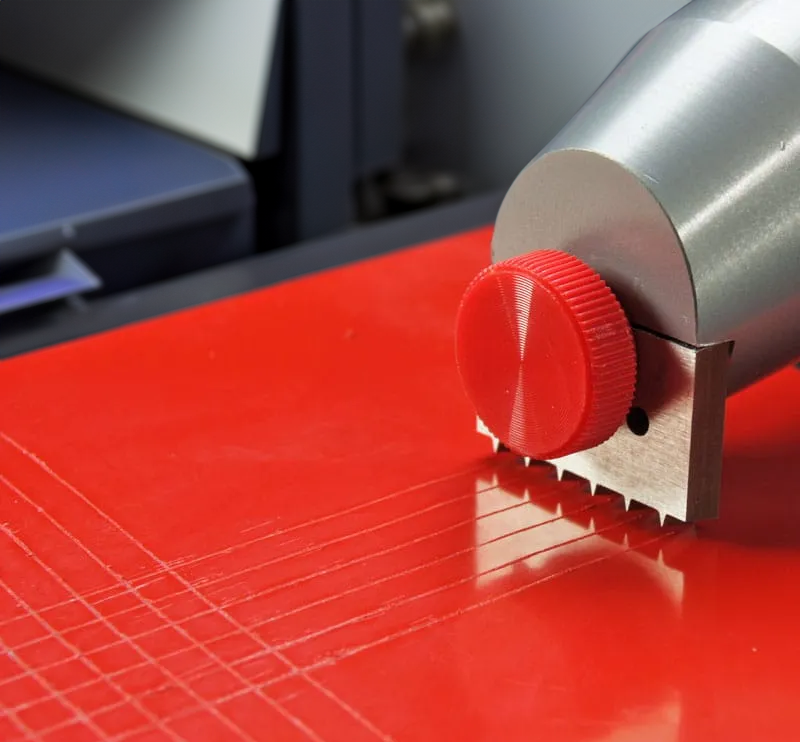One of the challenges faced when UV curing a chemistry is ensuring a satisfactory level of cure, a key indicator that there may be an issue is decreased machine/process speed, leading to production delays and compromised quality. In this technical article, we’ll explore some key factors contributing to this issue and provide actionable steps to diagnose and address them effectively.
Problem Identification
When ink or coating is no longer curing as fast as it used to, it’s essential to first determine whether it’s a curing issue or something else. Here are some simple tests to help identify the issue.
If the chemistry feels dry/cured conducting a ‘cross hatch’ test (https://www.elcometer.com/en/cross-hatch-method) can help differentiate between the two. If the ink flakes off in granular pieces rather than staining the substrate when rubbed, it indicates cured, but poorly adhering to the substrate.
If the process speed is reduced and the curing improves then it could well be an issue with the UV system. If the curing does not improve then it is more likely to lie elsewhere in the process.
Factors to Consider
- System Changes
- Assess any changes in the UV system, including cleanliness, correct reconnection, and positioning. Even minor shifts in position can impact curing efficiency.
- Verify that the UV system is switched on and operating at full power to ensure optimal curing conditions.
- Chemistry Evaluation
- Investigate whether there have been changes in the chemistry, such as switching to a new batch or an old batch of that was curing, or type of ink or coating. Inconsistent/changed chemistry formulations can have different curing performances.
- Monitor any alterations in the application process, such as adjustments to plates, blankets, rollers and the chemical solutions used on them, which may influence curing results. New soft compound components can absorb a lot of initiator out of the chemistry.
- Speed Variation
- Determine if reducing the process speed improves curing performance. If curing improves at lower speeds, it could suggest UV system-related issues. Generally if the curing does not improve with reduced speed then it is unlikely to be caused by the UV system. Conversely, persistent slow curing may indicate chemistry-related issues.
- Direct Application Test
- Apply a sample of the ink or coating directly to the substrate without passing through the application system. If curing occurs under these conditions, it suggests contamination or interference within the application system, such as an oil leak.
Conclusion
Addressing slow curing issues requires a systematic approach to identify and resolve underlying factors affecting the printing process. By conducting thorough evaluations of UV systems, chemistry formulations, application processes, and substrate interactions, printers can optimise curing efficiency and maintain high-quality output.
In conclusion, proactive monitoring and troubleshooting are crucial for identifying and addressing slow curing issues promptly, ensuring consistent production performance and customer satisfaction.



